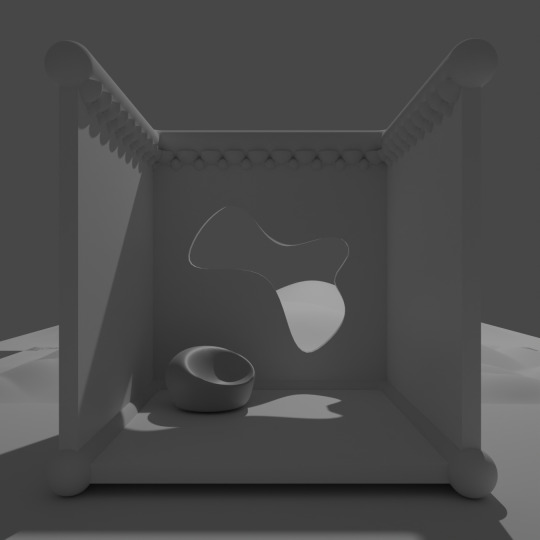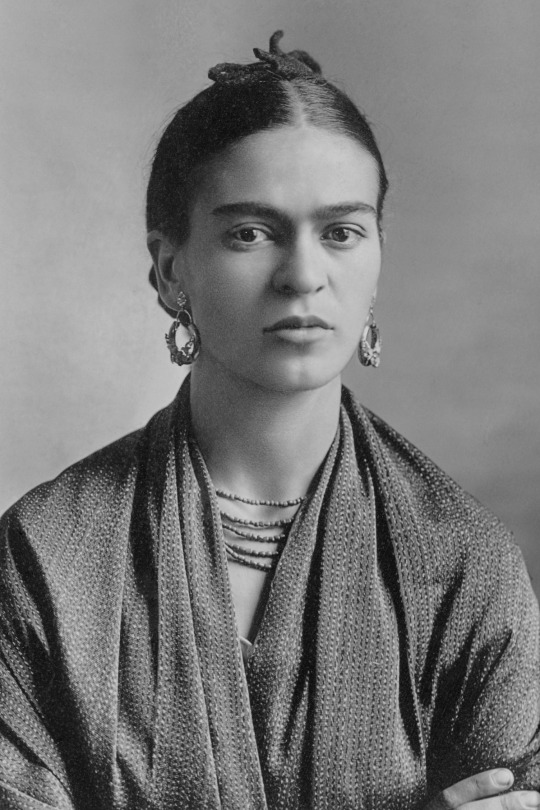#blobism
Explore tagged Tumblr posts
Text

Blobby unnamed font designed by Jamie Flunder
Source: https://x.com/y2k_aesthetic
20 notes
·
View notes
Text
The interesting part about ‘college/healthcare/etc. should be privately owned so there’s competition’ is the implication that the government would be corrupt with more humanitarian responsibilities, right next to the neighboring belief that the government isn’t corrupt
2 notes
·
View notes
Photo

Selfridge’s & Co. building, Birmingham, UK.
I've never been too keen on photographing this building and never been very satisfied with the few attempts I've made, but I'm quite pleased with this one from today's enjoyable sojourn in Birmingham.
#richard holman photography#photographers in Birmingham#selfridges birmingham#architectural photography#blobism#bullring
1 note
·
View note
Photo

. . . . . #architecture #brutalist #artdeco #streamlinemoderne #parametric #contemporary #blobism #minimalist #expressionist #artnouveau #deconstructivist https://www.instagram.com/p/CEMmSwggnTu/?igshid=zu9to30yuazn
#architecture#brutalist#artdeco#streamlinemoderne#parametric#contemporary#blobism#minimalist#expressionist#artnouveau#deconstructivist
0 notes
Photo

Blobism
2 notes
·
View notes
Text
Reading Reflection- Week 9
Summary: This week we had a lot of content and it’s going to be hard to condense it all in one post. We read a chapter in Emerge about how our innate talents need a catalyst if we want our creative selves to emerge. There were also two articles about common myths that society places around artists. The articles were about how Artists make their living and myths about scientists and creatives having different types of minds. Along with the articles we watched a video about how artists explore their identity. I found that the video was not what I expected. It focused on three artists accepting who they were and making art about it, and while it was interesting, I don't feel like it explained how artists explore their identity, like the title says.
Reflection: My favorite art of the reading was Emerge. In the few pages we read it was able to cover several important details people need to know about life, not just art. The first thing that stood out to me was the idea of Reductionism or Blobism. Blobism is where you look at people and immediately clump them all together as a group without getting to know the individual. When you place people you are missing out in their story. You are taking away their ability to be an individual for a specific purpose when you place them in a blob. This reminds me of something I learned about in High School from a Ted Talk by a woman named Adichie. She talked about the dangers of a single story. The danger of only taking the one story you have of someone or something (usually formed by a stereotype) and making that one story someone's identity. This is wrong! This idea of stereotypes also connects with the articles we read about stereotypes of creative minds vs. scientific minds. People want to understand people. They want to assign value to them so they try to understand them and one way to do that is to say if someone is a creative thinker then they must be a feeler, an emotional person. Or, if someone likes science or is in the scientific fields then they must be logical and analytical. The article pushed against this and explained that people can be both. It doesn’t have to be one or the other. In fact many of the best scientists also consider themselves artists and vise versa. People need to stop placing people into boxes by their stereotypes. Instead we should listen to them and learn from them. In doing this, we discover who they are.

Oil Painting by Gregory Thinker “Complete Stop”
0 notes
Text
Reading Response #9

Emerge
The first couple pages of Emerge were the most intriguing to me. The descriptions of reductionism and blobism were very sad. I feel like that is what is happening in today’s age. People don’t want to have identities anymore. With the current movement of culture people are wanting to strip away all pieces that make us God’s children.
How Artists Explore Identity” video from MoMA
I really liked the description of Frida Kahlo. I have heard lots about Frida Kahlo, but never knew why she had become famous. It was very interesting to know about her leaving her husband and painting herself without any of the things he liked about her. The Runaways by Glenn Ligon was also a very interesting art piece.
Exploding the Myth of the Scientific vs Creative Mind
The terms divergent and convergent thinkers were a new topic for me. I did not know that convergent thinkers were thought of as good at science and divergent thinkers were thought of as better in arts and humanities.
“The Myth of the Starving Artist and Other Misconceptions about Creativity”
I really liked this quote from the article, “But at the same time, what writer, designer, or musician wants to be irrelevant or ignored?” There is definitely a stereotype that artists need to go through this struggle, that they must struggle to become famous.
Another interesting point was the point made about marketing. I am a marketing major, so hearing that people think marketing is evil was not a great thought. As I continued reading I saw the reasoning with the Nazi propaganda. I think that marketing can be bad, but can also be really good.
0 notes
Text
The way that toddlers interact with language while they’re still learning it is a lot more interesting than people give it credit for. My half-brother just described running with your feet as running like your feet. Isn’t that so cool?
4 notes
·
View notes
Text

Ballet
#ballet#digital painting#painting#pretty phone wallpaper#phone wallpaper#phone background#psychedelic art#blobism#60s psychedelia#childrens books#spooky art#surrealism
6 notes
·
View notes
Text
Art Reading Response:

.
⭐️Summary of Emerge (Emerge & Determination) pages 36-55:
.
The chapter of emerge starts off with the writer telling us basically the definition of what emerge means (35). They gave the example of when “putting harmful ingredients together you get some thing called a Twinkie” (35). This example was basically to show us that when putting things together you get emergence. Then the writer went on to talk about how the human body is identified (36). To a reductionist view human beings are nothing but cells or as the writer described it as “blobisms” (36). Perini’s main goal was to shed light on the fact that human beings are not just blobs, they are image bearers of God, and have been given gifts and talents that establish who we are (37). The writer wants us to use our talents and combined them with our creative habits so that something greater will emerge (38).
In the second chapter of a emerge titled determination, the main idea described is the fact that we ourselves can be our biggest distraction (50). He talks about how being creative is a choice and is a way of life (50). He then shed light on how determination is pretty much the only tool to overcome the distraction of our self (50). In order to build determination one needs to set a reminder that will help keep your mindset set on your goal (51). Then you need to have goals, which can be short or long term but something that will keep your eyes ahead in achieving success (51). We also in this process need to know ourselves and overall know that God has given us talents for us to develop and use for a greater good (51). And then The writer went on to say how a mission statement is very critical in this process (52). A mission statement will help you in accomplishing your goals. But the key is to have a mission statement that is inspiring to you so that when you are in a difficult spot you can look to that statement to move forward (52). And then overall having mentors to help you accomplish your goals will really help and push you through the very end. Having the opportunity to not go through something alone can help you achieve more in life because other people are right alongside you (52).
.
.
🤔What I thought about Emerge (Emerge & Determination) pages 36-55:
.
I thought the two chapters of emerge were very interesting. Before reading this I had never heard the term reductionist. I find it so weird that someone can believe that we are just nothing but cells. God has made us in our own uniqueness and he has instilled in us gifts and talents different from everyone. How can someone think that we are all just blobs and no different from the natural world. I just don’t get it. I like how the author said “creative habits by themselves accomplish nothing either, but when you combine creative habits with your talents, or creative habits with your endeavors, something will emerge.” I like this quote because it shows that if we use our talents and our habits that God has given us then something greater emerge. I want to be a part of something greater and by combining my talents with my creative habits that will happen. Which is exciting! I also found the second section really interesting as far as determination goes. I could definitely relate with this chapter because I find myself being my biggest distraction. And I really liked how the author gave us like a roadmap/ step to step guide on how to overcome distraction. I definitely think that I can apply this to my life and it will help me in my current situations.
.
.
.
⭐️ Summary of Exodus 35:30-35:
.
In these verses it talks about how God has given people different talents and gifts. As God has filled people with the spirit He gives us wisdom, understanding, and knowledge with all kinds of different skills.
.
.
🤔My thoughts on Exodus 35:30-35:
.
I think these verses are very interesting because it is showing us the first people that got gifts from God. And I really like how as we read God fills those people with the spirit, we know that as believers we are filled with the spirit. Having Jesus live inside you is so cool and comforting to think of because we know we are not alone. I also find it interesting how God shows in the Scriptures that he gives us all different kinds of talents and skills. It really shows how much He cares for us because He gives everyone their own personal gifts and talents. God is so good 🥰!
.
.
.
⭐️Summary of video “How artists explore identity | Modern Art & Ideas:”
.
The overall concept of this video explores how we view ourselves and how others view us. One of the examples was of Frida Kahalo. She was originally famous because her husband, but she then wanted to convey to others who she really is and not under the standard of her husband. She did this by creating artwork that was extremely personal to her and showed her true self. Then they gave an example of someone named Glenn Ligon, where he had people write down how they view him and how they would describe him. Most often the comments was only related to superficial qualities which don’t define who Glenn actually is.
.
.
🤔My thoughts on video “How artists explore identity | Modern Art & Ideas:”
.
The way that people often perceive us is most likely not who we truly are. Often people only focus on the superficial appearance qualities that don’t always truly make up who we are. We need to not automatically judge others and create who they are because we don’t truly know who they are. We can only truly know who someone is by taking the time to get to know them. As people often create judgments/ideas on who people are we often miss who the true person is. Which is not good! This video proved that what people think is most often incorrect. So why do we make judgments about people without getting to know them first?
.
.
.
⭐️Summary of video “What Art Tells us about Gender:”
.
In this video the topic of Gender was discussed. And how the idea of gender gave different meanings especially to different time periods in history. The example of Hermaphroditism was often a common concept in ancient Greeks art. These art pieces showed a human with both genders to convey a different meaning that was relevant in history at that time. The topic of masculine and feminine was brought up as well. Those ideas gave different art pieces meaning because very different techniques were used to portray those concepts. These topics gave the artist an outlet to express how they felt. Overall history has been shaped by these new ideas and concepts that people have cultivated over time.
.
.
🤔My thoughts on video “What Art Tells us about Gender:”
.
It is interesting to see how artists from in the past to now use the concept of gender to convey certain things to the viewers. But most the time, what the viewers think the artist is trying to convey is not always accurate. We as viewers often create judgments and answers to whatever we see, and in turn that could not be at all what is trying to be conveyed. For me it’s hard because coming from a Christian background the topic of gender wasn’t really discussed. I mean of course God created male and female, but that was it. The way society views gender is something that I feel like Christians don’t necessarily enjoy talking about. Because it’s a touchy subject. How do we even approach starting to talk about this subject of gender? I don’t think I’ve ever had a conversation about it about how others view it. I have just always had my own opinion and my parents opinion to shape what I believe. But I really would want to talk about different perspectives on how people view gender especially in art.
.
.
.
📸Image above:
0 notes
Text
I made a new religion

It’s called Blobism

Be a Blobist today

May the blob be with you.
0 notes
Text
today’s topics: car jacks, le cobusier, junk spaces, blobism & postmodernist bookshelf design
6 notes
·
View notes
Text
Blobitecture - Architecture Blob
Blobitecture – Architecture Blob
La blobitecture, également appelée "architecture blob" ou "blobisme", fait référence à des bâtiments modernes de forme amorphe. "Blobitecture" est un terme inventé par l'écrivain du New York Times Magazine, William Safire, qui l'a utilisé pour décrire avec sardonie la montée soudaine d'immeubles de type amibe. Contrairement à son intention, les architectes ont heureusement adopté "blobitecture"…
View On WordPress
0 notes
Link
Karim’s China #STUDIO designed by #karimrashid in 2016 #office #design #industrialdesign #digipop #interiordesign #interiordesign interiordesign #china #lobby #reception #blobism #waves… https://t.co/yA8rM8Ay4O
— karim rashid (@karim_design) March 14, 2019
March 14, 2019 at 09:09PM
0 notes










